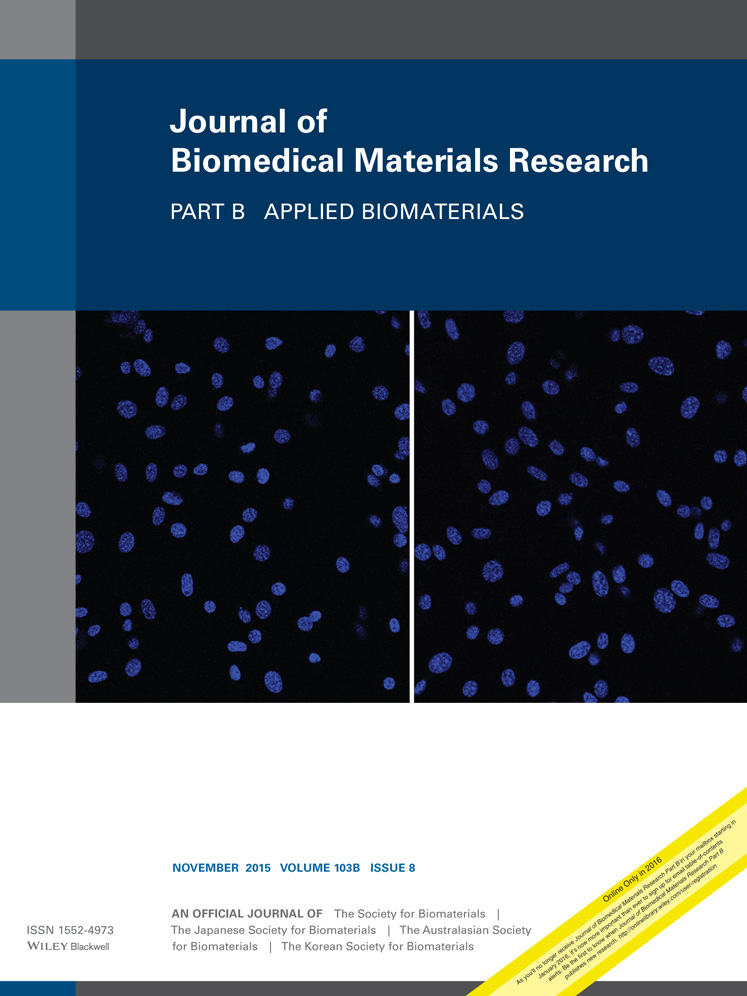Physicomechanical and antibacterial properties of experimental resin-based dental sealants modified with nylon-6 and chitosan nanofibers
Abstract
This study aimed to develop and evaluate resin-based experimental dental sealants containing electrospun nylon-6 (N6) and chitosan (CH) fibers in an attempt to improve the physicomechanical properties and provide an antibacterial protective effect, respectively. Electrospun N6 and CH mats were immersed into a resin mixture, light-cured, and then cryomilled to obtain micron-sized resin-modified fiber particles. Different levels of the novel cryomilled particles (i.e. 1, 2.5, and 5% relative to the resin mixture, % by weight) were used to prepare the N6- and CH-containing sealants. A commercial sealant and the experimental resin mixture (unfilled) were used as controls. Flexural strength (FS), Vickers microhardness (VH), and agar diffusion tests were performed. The data were analyzed at the 5% significance level. No significant difference in fiber diameter of N6 (503 ± 31 nm) and CH (595 ± 38 nm) was observed. Upon cryomilling, the resin-modified CH and N6 mats led to the formation of irregularly-shaped particles, with an average diameter of 14.24 µm and 15.87 µm, respectively. CH-5% had significantly higher FS (115.3 ± 1.3 MPa) than all the other groups. CH-1% had significantly higher hardness values (38.3 ± 0.3 VHN) than all the other groups. Collectively, the results indicated that CH-containing sealants presented the highest FS and hardness; however, none of the CH-containing sealants displayed antimicrobial properties. © 2014 Wiley Periodicals, Inc. J Biomed Mater Res Part B: Appl Biomater, 103B: 1560–1568, 2015.




